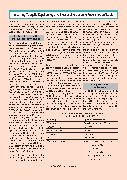Imparting Mosquito Repellent Agents & Assessing Mosquito Repellency on Textile many textiles products that are claimed to be able to repel mosquito away from human. This paper also in- cludes a review on some of the prod- ucts available for that purpose. Textile materials used in mosquito repellency studies Both natural and synthetic fabrics have been experimented in previous stud- ies. Vignesh- kumar and Specos et al. reported the use of scoured and bleached cotton knitted fab- ric in a study determining the “Repellence ef- fect of microencapsulated citrinellea oil on tretated textile fabrics against A. aegypti mosquitoes” and “Microencap- sulated citronella oil for mosquito re- pellent finishing of cotton textiles” (Specos et al. 2010; Vigneshkumar and Vijaykumar Vediappan 2012). Other study by Maheshwari et al. (Mahesh- wari and Ramya 2014) utilized the same textile materials of cotton fabric which made from rib knitted and experienc- ing the scouring, bleaching and dye- ing process in a study to deter- mine eco friendly mosquito repellent fabric finished with natural plant. This require- ment can give the significance means of the fabric selection when conduct- ing the repellency test. The greigh fab- ric can be controlled relying upon their suitability of studies as the finishing proses could be possible to imitate the daily utilization of article of clothing wear (Vigneshkumar and Vijaykumar Vediappan 2012). Two studies report- ed the use of synthetic fabric which is 100 % polyester fabric which made in the form of mosquito nets and other one is curtains. For the application of synthetic repellent such as DEET, Brown reported that DEET had been reported safe for cotton, wool and ny- lon fabrics types, but may damage the spandex, rayon and acetate due to the chemical content. In flammabil- ity test, DEET applied on polyester acrylic cloth ignited immediately when near a flame (Brown and Hebert 1997).ployed the various types of textile materials which are cotton, polyester and linen forming a blended woven curtain fabric (Farag et al. 2011). A re- cent study by Mweresa et al. conduct- ed in Kenya utilized various fabric se- lection which are polyester, cotton, cellulose with polyacrylate and nylon textiles as substrate for dispens- ing a synthetic odour blend to lure malaria mosquitoes (Mweresa et al. 2014). Athe Sumithra et al. uses the blended fab- rics, cotton, polyester, spun lycra and poly lycra which the end use in the form of denim product (Sumithra and Vasu- gi Raja 2012). In view of the past reported studies, the most utilized material fabric is cot- ton. In some of the studies, the greigh fabric have been processed through the textile finishing pro- cesses for mak- ing a finished fabrics. Textile finishing usually involved treatments such as scouring, desizing, bleaching, mercer- izing and dyeing process. Textile fin- ishing usually involved treatments such as scouring, desizing, bleaching, mer- cerizing and dyeing process (Hall 1966). None reported the cotton fabric experiencing the finishing process mercerizing process. It is remarkable that the wet preparing of cotton fab- rics prompts its shrinkage, expanding the yarn number, mass every unit ter-ritory, and fabric thickness (Tarbuk et al. 2014). Mercerised cotton fibre will be round and hollow rather than strip like shapes, and the cross-segments of the filaments change from kidney like to rounda- bout molded. The primary ex- planation behind this is the cotton fi- bre swelling amid the mercerisation process. Amid mercerization, Sodium Hyroxide (NaoH) infiltrated into the lu- men of the cotton strands and swelled. Mercerizing process is the act of chemi- cal treatment on cellulosic fi- bre to improve the properties of the fi- bre in term of tensile strength, absorp- tion properties and also greater afinity of dyes and various chemical fin- ish- es. Mercerized cotton holds the prop- erties of higher mass per unit area, thickness, breaking force and elonga- tion, luster, with a change of surface charge that ensures further quality improvement and also higher adsorp- tion of anionic auxiliaries. Mosquito repellent textile products Textiles can act as a physical barrier to the entry of insects, mosquitoes and other anthropoids. At the moments, textile products developed as protec- tive textile against mosquito are ex- tensively used by consumers. The out- lines of existing things are recorded in the Table 2 beneath. Table 2 Classification of mosquito repellent textile products (Rozendaal 1997) ClothingUpholsteries/outdoor Treated jacketDetachable patches of fabric Netting jacketsHammock Bands and ankletsCurtain HeadnetsBed sheets VestBedcurtain Tshirt and trousersMosquito nets (netting models) - Rectangular net - Circular net - Wedge-shaped net Farag et al. in a study to determine the longer-lasting repellence cellulosic based cur- tain fabrics reported em-- Self supporting (baby net) - Hammock net NCM-OCTOBER 2021 37
